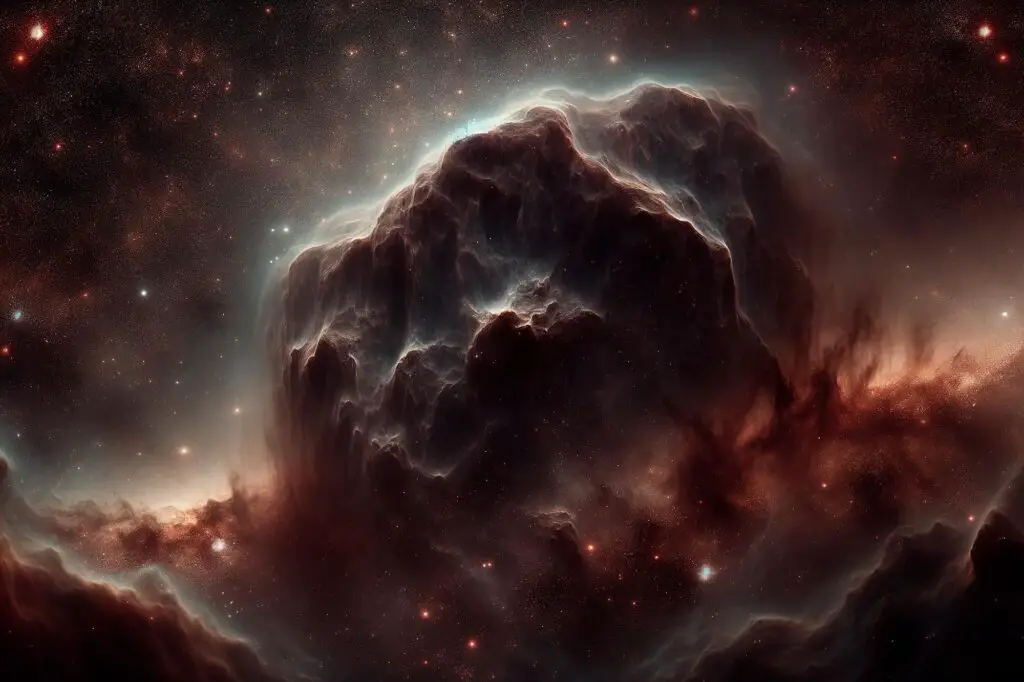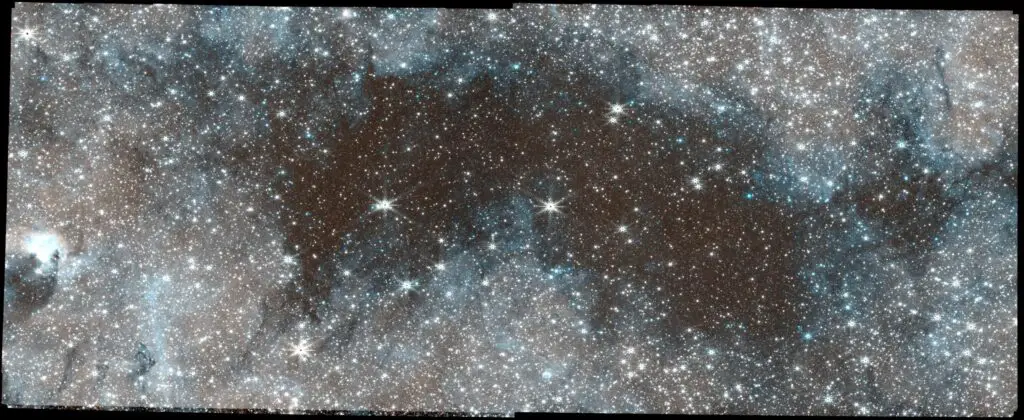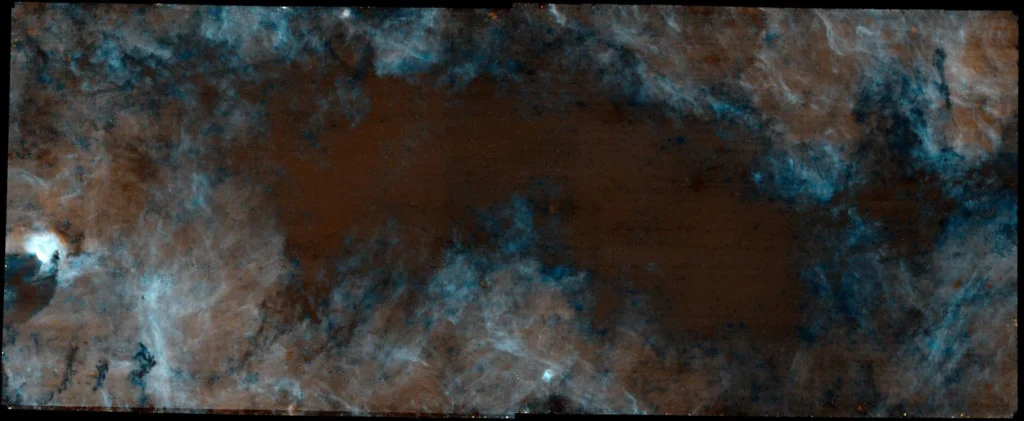In a groundbreaking study led by University of Florida astronomer Adam Ginsburg, the James Webb Space Telescope (JWST) has unveiled startling revelations about a mysterious region at the center of the Milky Way, known as “The Brick.”

This dense, turbulent gas cloud, previously an enigma due to its opacity and low star formation rate, is now at the forefront of a scientific breakthrough, challenging long-held theories about star formation and molecular processes in our galaxy.
The Brick, a dark and dense region in the Milky Way’s core, has long puzzled astronomers. Despite being a gas-rich environment, ideal for star birth, it has shown an unexpectedly low rate of star formation. The JWST’s advanced infrared capabilities allowed Ginsburg’s team, including graduate students Desmond Jeff, Savannah Gramze, and Alyssa Bulatek, to delve deeper into this paradox. Their findings, published in The Astrophysical Journal, reveal a substantial presence of frozen carbon monoxide (CO) ice within The Brick, far exceeding previous estimates.

This discovery raises intriguing questions about the molecular composition and star-forming processes in the Galactic Center. The significant amount of CO ice suggests that conditions should be conducive to star formation, yet The Brick defies these expectations. The gas within it is warmer than similar clouds, indicating a complex interplay of factors influencing star birth in this region.
The team’s research has also expanded our understanding of CO’s role in the galaxy. Traditionally, CO observations have been limited to gas emissions. However, the JWST’s observations, backed by intense backlighting from stars and hot gas, have unveiled the distribution of CO ice, providing a more comprehensive view of molecular existence and transport in space. This new perspective is crucial, as it suggests that the gas-to-dust ratio and CO abundance in the Galactic Center are lower than previously thought.

The implications of these findings extend beyond The Brick. The molecules in our Solar System were likely once ice on dust grains that coalesced to form planets and comets. Understanding the nature and distribution of interstellar ice, therefore, offers insights into the origins of the molecules that shape our cosmic environment.
Ginsburg’s team has only analyzed a fraction of their JWST observations of The Brick, with plans for a more extensive survey of celestial ices. They aim to determine the relative amounts of CO, water, CO2, and complex molecules in these clouds, shedding light on the progression of chemistry over time in these dense environments.
The JWST, with its advanced filters and spectroscopy capabilities, is providing astronomers with unprecedented opportunities to explore the cosmos. As Ginsburg and his colleagues continue their journey, they are not only unraveling the mysteries of The Brick but also paving the way for a deeper understanding of the molecular processes that govern star formation and the evolution of galaxies.
This study marks a significant leap in cosmic exploration, offering a new lens through which we can view the intricate and dynamic processes at the heart of our galaxy. As we continue to probe the depths of space, discoveries like these remind us of the vast and complex universe we inhabit, filled with phenomena that challenge and expand our understanding of the cosmos.
Reference(s): Research Paper

